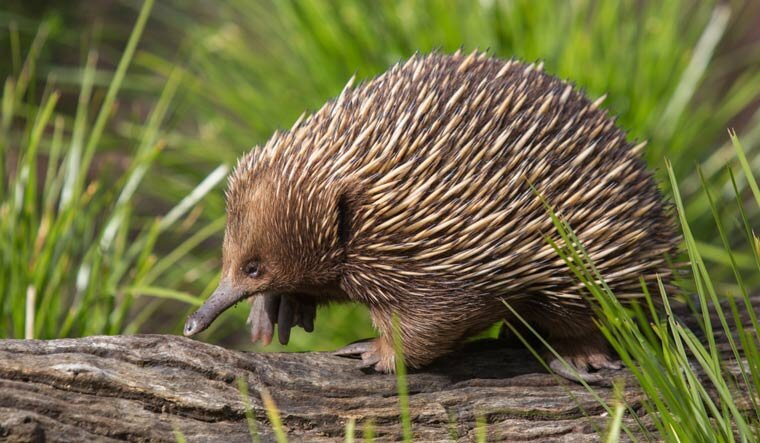Rapid Fire
Rapid Fire Current Affairs
- 10 Apr 2023
- 4 min read
Short-Beaked Echidnas Strategy to Beat the Heat
Short-beaked echidnas living in the Dryandra Woodland in Western Australia use a unique method to beat the searing heat during the summer. Since they cannot pant (breathe with short, quick breaths, typically from exertion or excitement) like dogs or sweat like humans, they use their quills to regulate their body temperature.
By slicking back their two-inch-long spines, they trap warmth, while raising them allows heat to escape. Another strategy is to rest inside hollow logs, where the air temperature can exceed 40oC.
However, researchers found that blowing snot bubbles can help the echidnas cool down. Their snouts are covered in electroreceptors that detect underground prey but only work when moist. When the animal blows mucus balloons that burst over its nose, evaporation cools the blood vessels inside the snout, reducing the body temperature.
Echidnas are the egg-laying mammal (Monotremes).
Read more: Short-beaked echidnas
'Ex KAVACH'
The Andaman and Nicobar Command (ANC) recently concluded a two-month-long joint military exercise named 'Ex KAVACH.' The exercise involved the assets of the Army, Navy, Air Force, and Coast Guard and aimed at fine-tuning joint warfare capabilities and enhancing interoperability and operational synergy between the forces.
It involved amphibious landing, air-landed operations, heliborne operations, and rapid insertion of the Special Forces on a remote Island of the Andaman and Nicobar Islands.
Read more: Ex KAVACH, Andaman and Nicobar Command (ANC)
Rare-Earth elements in Andhra Pradesh
Scientists at the National Geophysical Research Institute (NGRI) have found rare-earth elements (REEs) in Anantapur district, Andhra Pradesh.
REEs consist of a group of 17 chemical elements, including the 15 lanthanides: lanthanum (La), cerium (Ce), praseodymium (Pr), neodymium (Nd), promethium (Pm), samarium (Sm), europium (Eu), gadolinium (Gd), terbium (Tb), dysprosium (Dy), holmium (Ho), erbium (Er), thulium (Tm), ytterbium (Yb), lutetium (Lu), and two additional elements: scandium (Sc) and yttrium (Y).
They are particularly important for making permanent magnets used in modern electronic devices such as smartphones, computers, and jet aircraft.
Read more: Rare-earth elements (REEs)
President Murmu’s Maiden Sortie in Sukhoi-30 MKI
President Droupadi Murmu recently went on a 30-minute flight in a Sukhoi-30 MKI fighter aircraft from Tezpur Air Force Station in Assam. She is the third president and second woman president (first- Former President Pratibha Patil) to fly such a sortie.
Tezpur Air Force Station is a vital IAF airbase near China, it has fighter squadrons, a helicopter unit and radar and missile squadrons.
The President’s sortie in the Sukhoi 30 MKI fighter aircraft is a part of engagement with the armed forces as the Supreme Commander of Indian Armed Forces.
The Sukhoi-30 MKI is a multirole combat aircraft developed by Russia's Sukhoi and licensed produced by India's Hindustan Aeronautics Limited (HAL). It is one of the most advanced fighter jets in the Indian Air Force (IAF) and is used for air superiority, air-to-ground attack, and air-to-air refueling missions.
Read more: Sukhoi-30 MKI, Supreme Commander of Indian Armed Forces.





